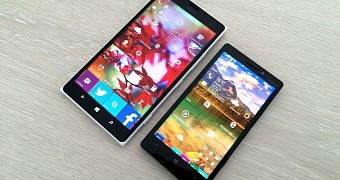Microsoft started the Windows 10 Mobile rollout for Windows Phone devices last week, but contrary to the original promise, many old models were left behind and not only didn’t they receive the upgrade, but they never will.
Redmond’s explanation, although infuriating for Windows Phone fans, makes sense: we only want to ship Windows 10 Mobile to devices where users can really be provided with a flawless experience.
This hasn’t stopped users from accusing Microsoft for lying, false advertising, and things like that, and at some level, they are right: most of them have been waiting for months to get Windows 10 Mobile on their devices, which they thought were eligible for the upgrade, only to find out that they can’t get the new operating system due to a sudden decision.
Microsoft might be right after all
But if there’s something that Microsoft’s getting right is that not all Windows Phone devices can run Windows 10 Mobile flawlessly.
In the last few days, we’ve received tons of comments from our readers who said they decided to install Windows 10 Mobile on their unsupported devices just because Microsoft hasn’t provided them with the official upgrade.
And unsurprisingly, many have experienced quite significant slowdowns after switching to Windows 10 Mobile, which could be living proof that Microsoft indeed made the right call this time. Before you rush to the comments section to say that bugs were quite obvious in a preview build, keep in mind that version .164 is the same for both insiders and retail users, so most of the issues should already be fixed.
Lumia 520 and 1020 are two of the models that have been left behind, although their specs are almost entirely different. 520 has only 512 MB of RAM, so it makes sense at some level to blacklist it, but the 1020 has no less than 2 GB of RAM, which makes it more than capable of running Windows 10 Mobile. And yet, we’ve seen reports and comments posted online claiming that the 1020 doesn’t actually run Windows 10 so smoothly after all, so it’s very clear that Microsoft did its homework before pressing the release button.
The case of HTC M8 for Windows
The HTC M8 for Windows is one particularly interesting case because it also has the required hardware to cope with Windows 10 Mobile, but again, it’s not receiving the upgrade. But insiders keep reporting issues when running the new OS on the M8.
Here’s what one of the customers who purchased the M8 posted this morning on reddit:
“Recently I've been having strange problems with the phone getting caught in a reboot loop or kernel panic when on very low battery (<4%) until it dies. Today it was at fairly low battery (I know it was below 10%) and it died suddenly. I figured it had just run out of battery and I plugged it in, but it didn't charge. Tested the cable with another phone and it worked. Plugged the phone into my computer, and it made the sound as if a new USB device was plugged in but nothing else happened. I tried holding the buttons for a hard reboot for probably 30 seconds and there was no response. I tried removing the SIM and SD cards to force a reboot but that was also unresponsive.”
In the end, the problem with Windows 10 Mobile not being available on all Windows Phone devices is that Microsoft got everyone’s hopes up at first only to disappoint them later. Not releasing new software to devices that can’t run it clearly makes sense, but when you say that you will do that, this is what happens.

 14 DAY TRIAL //
14 DAY TRIAL //